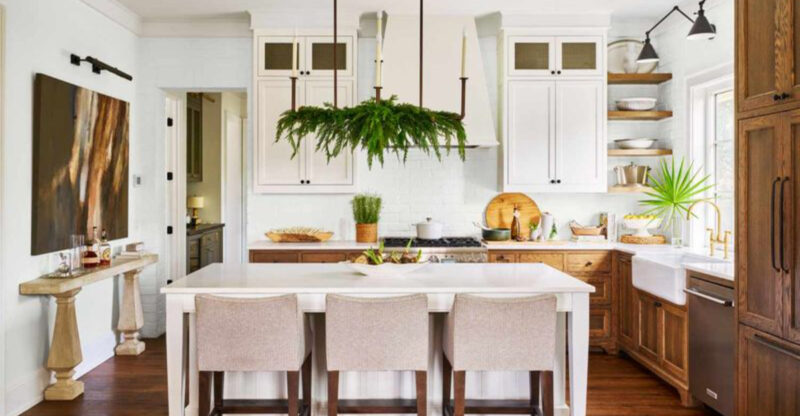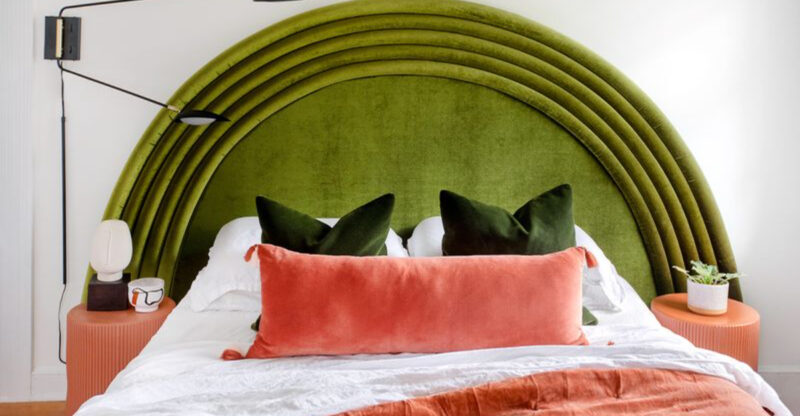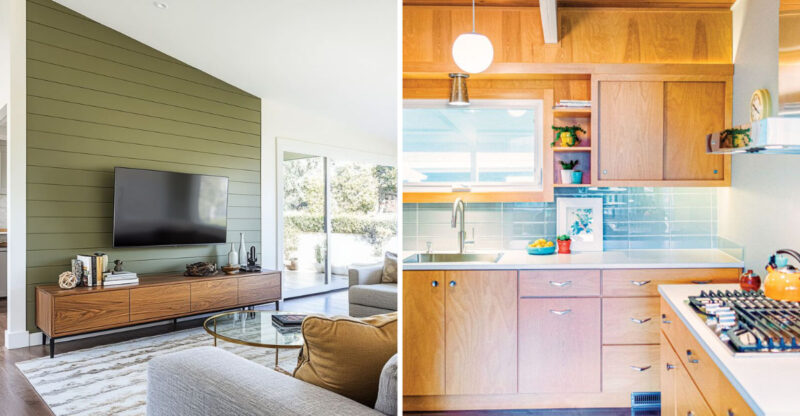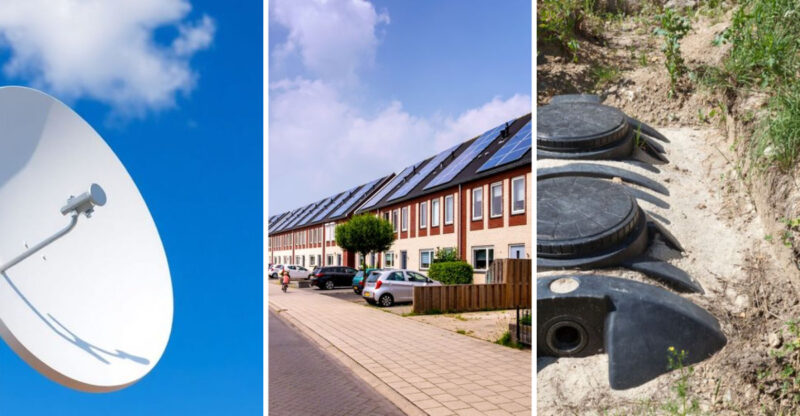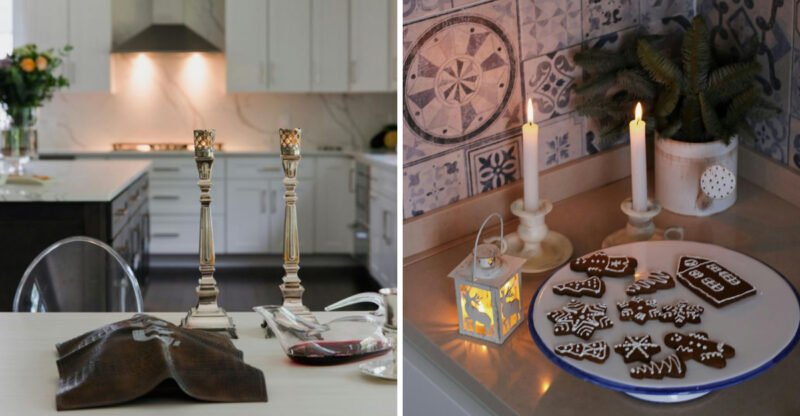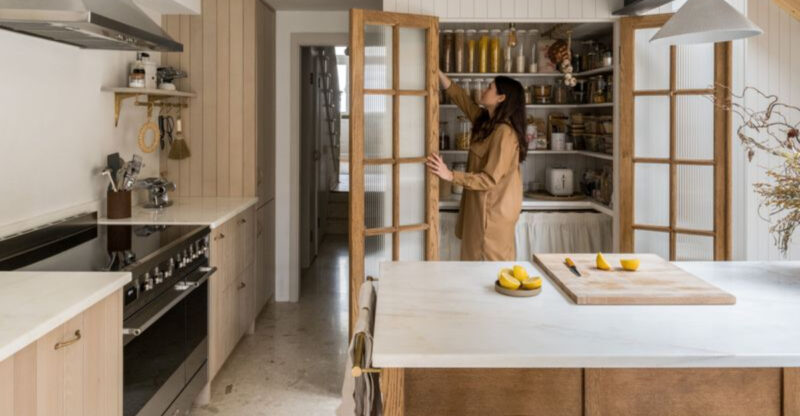8 Kitchen Mistakes That Clash With New Mexico Style, And 10 That Feel Right At Home
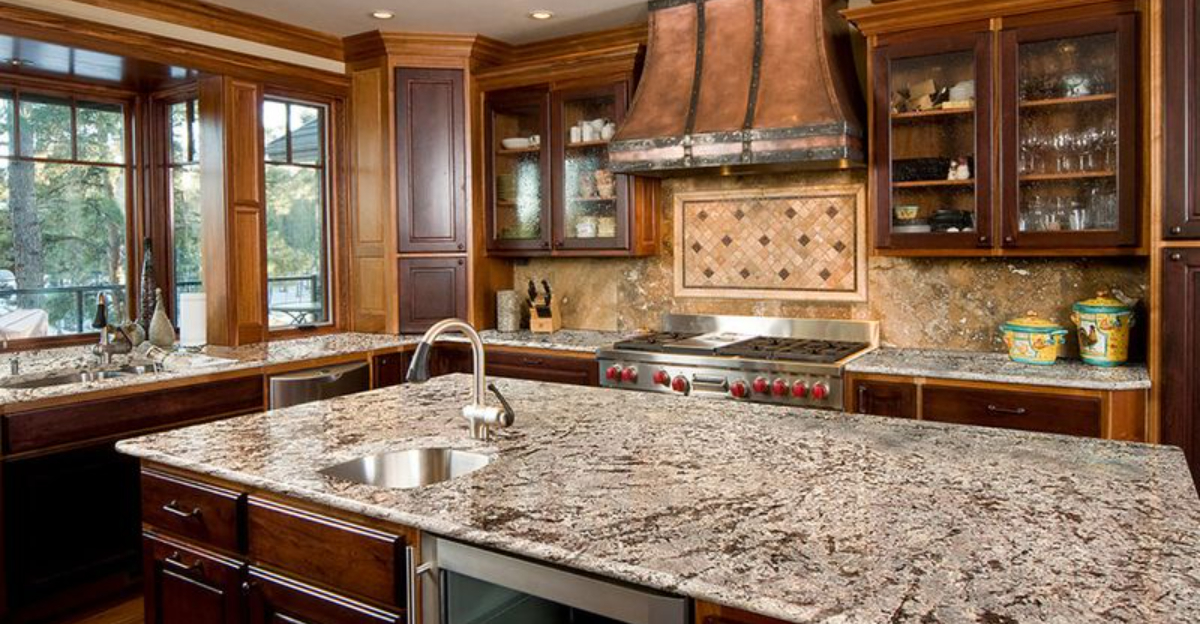
Creating an authentic New Mexican kitchen isn’t just about function, it’s about capturing the spirit of the Southwest. When decorating your kitchen, some design choices can clash horribly with the region’s distinctive style, while others embrace its rich cultural heritage perfectly.
Anyway, whether you’re renovating or building from scratch, understanding these elements will help you create a space that truly honors the unique charm of New Mexico.
So, let’s ditch the design disasters and spice things up with Southwestern flair! Get ready to cook up a kitchen as radiant as a New Mexico sunset.
1. Glossy High-Gloss White Cabinetry
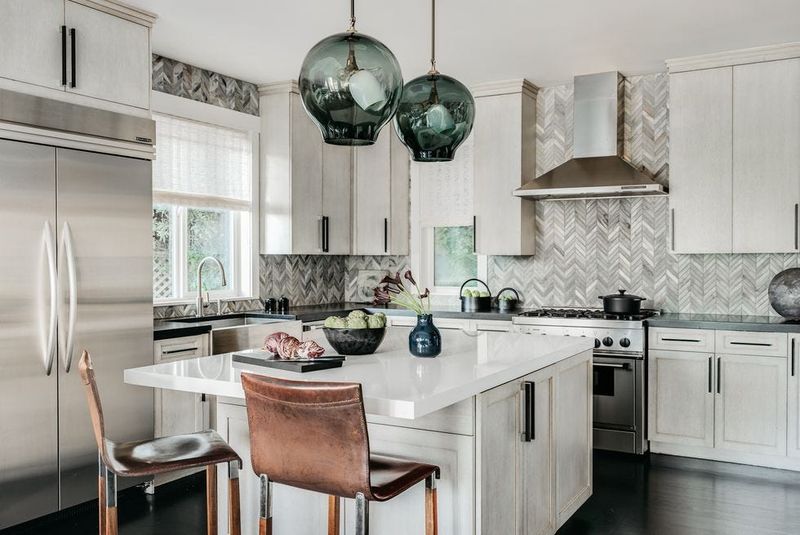
Nothing feels more out of place in a Southwest kitchen than sleek, ultra-modern cabinets with a mirror-like finish. The stark brightness creates a cold, sterile feeling that contradicts the warm, earthy essence of New Mexican design.
Traditional homes in this region historically used natural materials that connected residents to the landscape. Replacing these authentic elements with reflective surfaces creates a jarring disconnect that instantly marks your kitchen as inauthentic.
2. Stainless Steel Ultra-Modern Fixtures
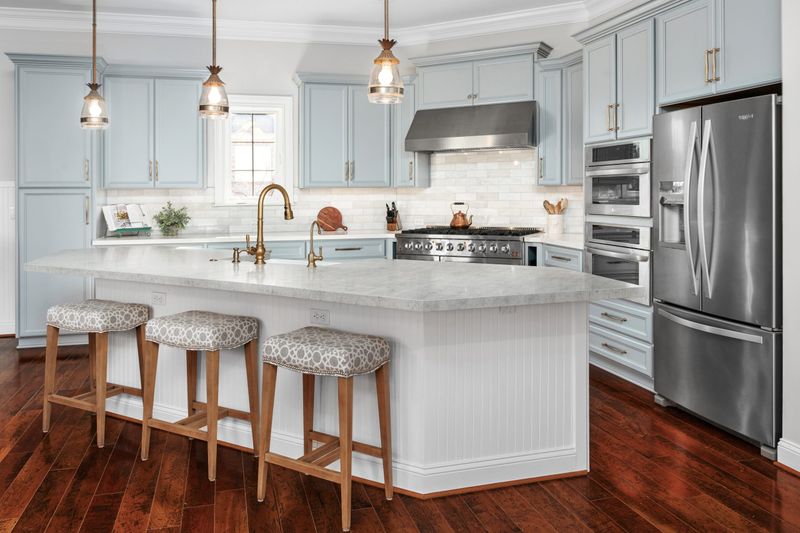
Ever walked into a kitchen where everything gleams with industrial coldness? That’s what happens when ultra-modern stainless steel fixtures dominate a space meant to channel New Mexico’s warmth.
The reflective surfaces create a clinical, laboratory-like atmosphere completely at odds with the region’s organic aesthetic. While practical, these fixtures lack the handcrafted character that makes Southwest kitchens feel authentic and welcoming.
3. Cold Gray Color Palettes
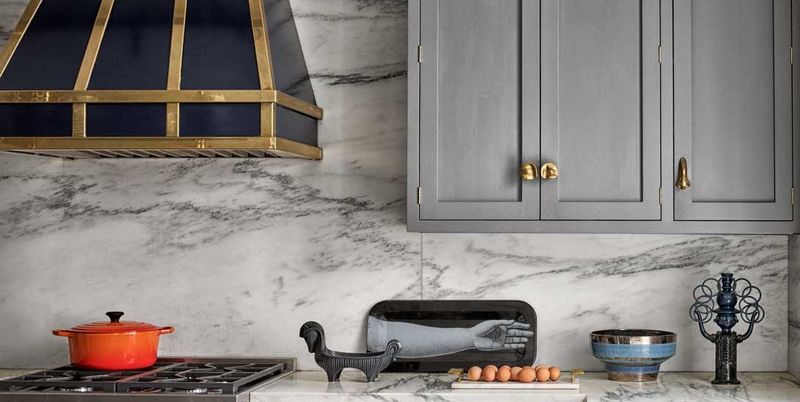
Gray might be trendy in many parts of the country, but in New Mexico, it feels like a cloudy day in a land of sunshine. Cool-toned grays create a distinctly Eastern or Northern European feel that clashes dramatically with the region’s warm, sun-baked aesthetic.
The Southwest is defined by its incredible light and warmth. Using colors that absorb rather than reflect this natural brilliance works against the very essence of what makes New Mexican spaces special.
4. Minimalist, Handleless Cabinets
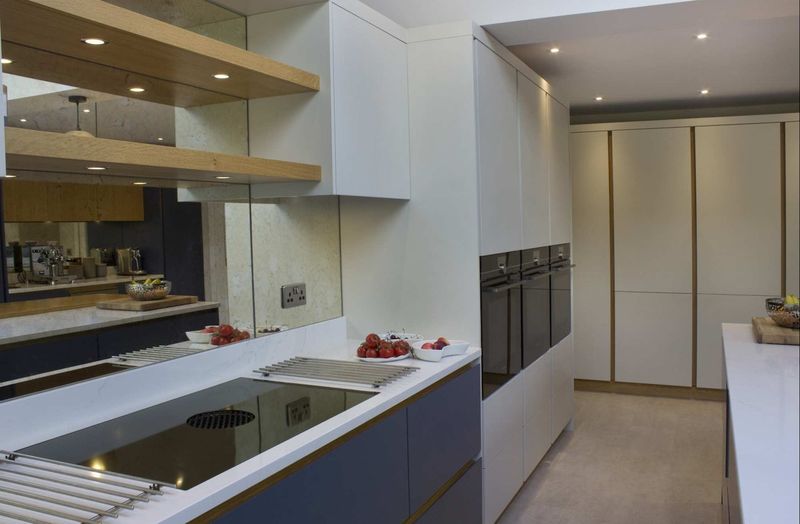
Push-to-open cabinets might scream modern European luxury, but they whisper nothing of New Mexico’s rich design heritage. The stark, featureless surfaces create a blank canvas devoid of the tactile interest that defines authentic Southwestern spaces.
Hardware in traditional New Mexican kitchens tells a story, often featuring handcrafted details that reflect local artisanship. Removing these elements strips away opportunities for cultural expression and personal touches that make a kitchen feel genuinely connected to its place.
5. Sleek Quartz Countertops With No Texture
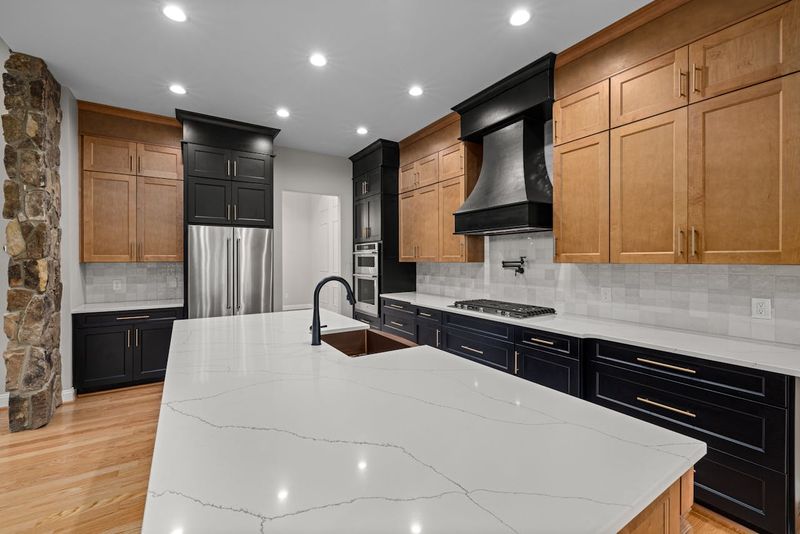
Running your hand across a perfectly smooth, engineered quartz countertop in a New Mexican kitchen feels like something’s missing. The absence of texture creates a visual and tactile disconnect from the region’s naturally varied landscape.
New Mexico’s aesthetic celebrates imperfection and organic variation. Perfect, uniform surfaces lack the character and story that comes with materials that show their natural origins and handcrafted nature.
6. Industrial Pendant Lights
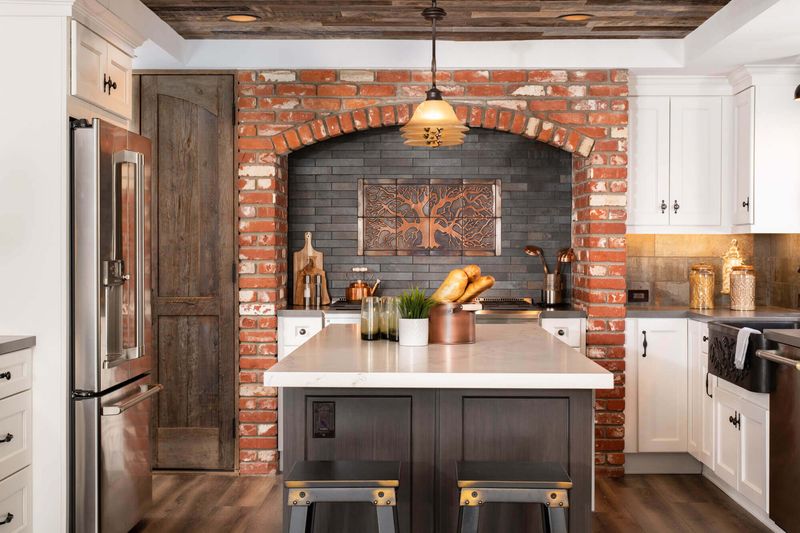
Factory-inspired lighting fixtures with exposed bulbs and metal cages might work beautifully in a Brooklyn loft, but they tell the wrong story in a New Mexican kitchen. These fixtures reference an industrial past that doesn’t align with the region’s architectural heritage.
Lighting in Southwestern design traditionally enhances the warm, inviting atmosphere that makes these spaces so special. Hard-edged industrial fixtures cast harsh shadows rather than the soft, flattering light that complements adobe walls and natural materials.
7. Subway Tile Backsplashes
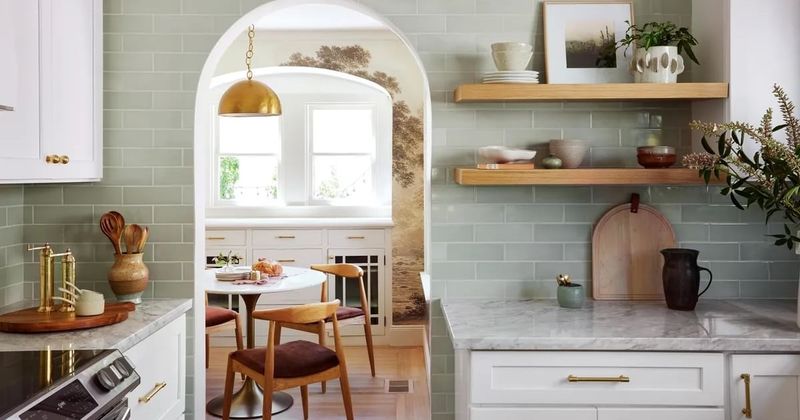
Though wildly popular across America, the clean grid of white subway tiles creates a distinctly East Coast urban feel that clashes with New Mexico’s organic aesthetic. Their uniform appearance lacks the handcrafted quality that gives Southwestern kitchens their soul.
This style of tile originated in New York City subways, about as far from New Mexican design inspiration as one can get! The repetitive pattern feels too regimented compared to the more free-flowing, artistic tile traditions of the Southwest.
8. European-Style Flat-Panel Cabinets
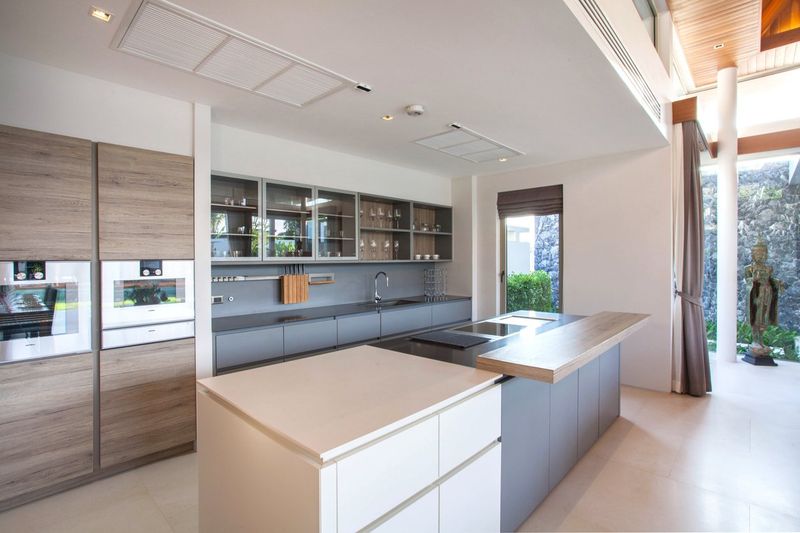
Sleek, handle-free cabinet fronts might work beautifully in Scandinavian or German kitchens, but they feel distinctly foreign in a New Mexican context. Their machine-perfect edges and surfaces contradict the handcrafted tradition that makes Southwest kitchens so appealing.
Traditional cabinetry in this region celebrates the natural character of wood and often features details that reflect Spanish colonial influence. Removing these elements in favor of flat, featureless panels erases cultural connections that give New Mexican kitchens their distinct personality.
9. Warm Adobe-Inspired Wall Colors
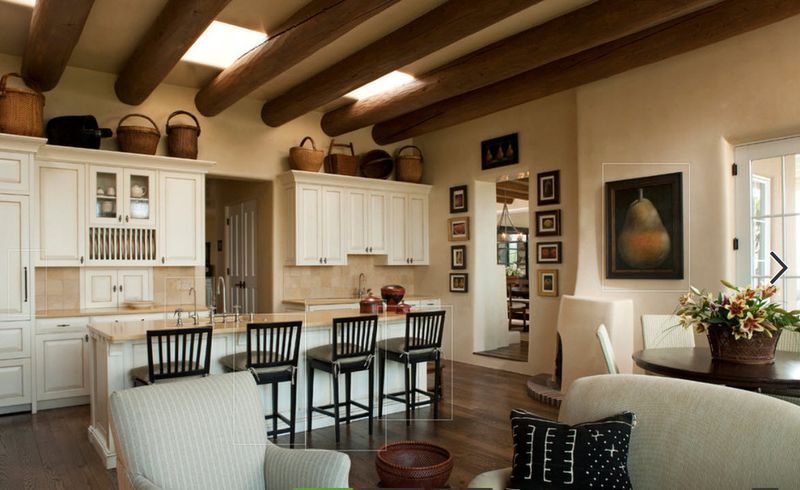
Can you imagine walking into a kitchen where the walls glow with the same sun-baked warmth as traditional adobe buildings? That’s the magic of choosing the right paint colors for a New Mexican kitchen.
Terracotta, burnt sienna, and golden yellow tones instantly create an authentic Southwestern atmosphere. These earthy hues reflect the natural landscape and indigenous building traditions, making even new construction feel connected to centuries of regional history.
10. Saltillo Tile Or Natural Stone Flooring
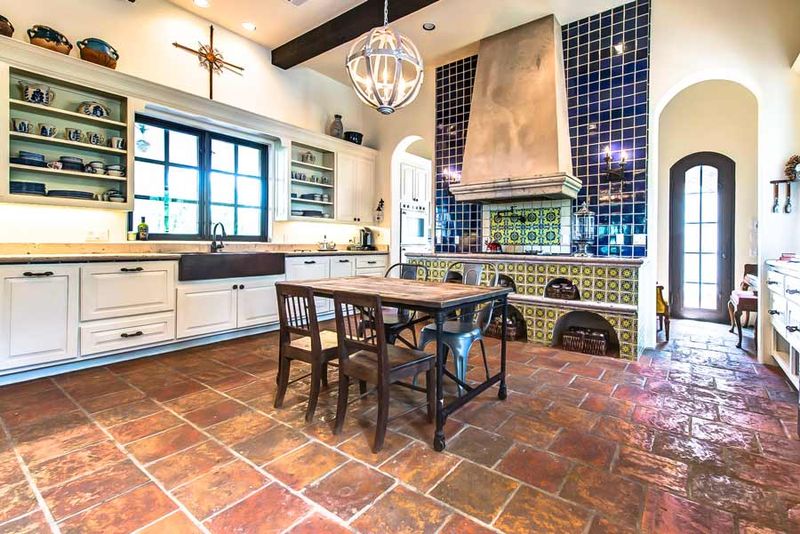
Step onto these tiles and you’ll feel the soul of the Southwest beneath your feet. Handmade Saltillo tiles with their characteristic terracotta color variations or locally-sourced stone create an immediate connection to the land.
The slight irregularities in these natural materials tell a story of craftsmanship and tradition. Even better, they hide dust beautifully in this arid climate and stay cool during hot summer days, proving that authentic regional design is as practical as it is beautiful.
11. Exposed Wooden Ceiling Beams (Vigas)
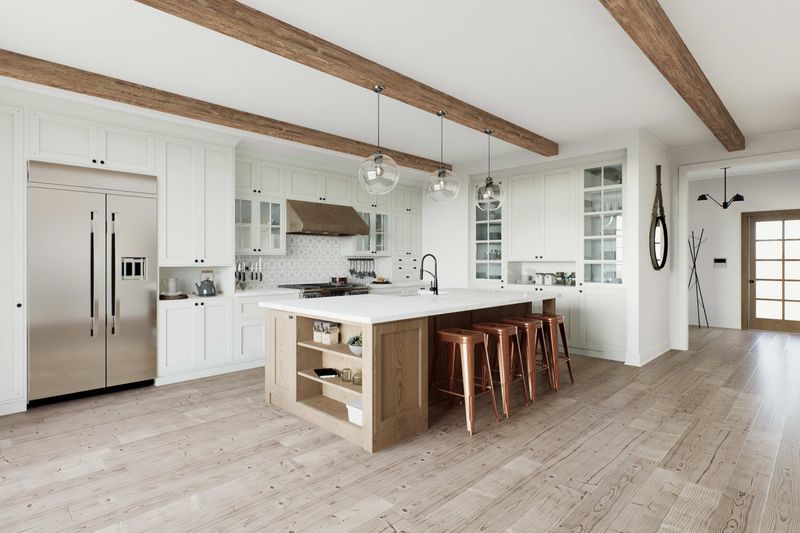
Look up in any authentic New Mexican kitchen and you might spot these round wooden beams stretching across the ceiling. Vigas aren’t just structural elements, they’re a direct link to indigenous and Spanish colonial building techniques that defined the region’s architecture.
The rough-hewn texture and natural wood grain add warmth and character impossible to replicate with modern materials. Even in contemporary homes, these traditional ceiling elements instantly create a sense of timeless Southwestern authenticity.
12. Hand-Painted Talavera Tile Backsplashes
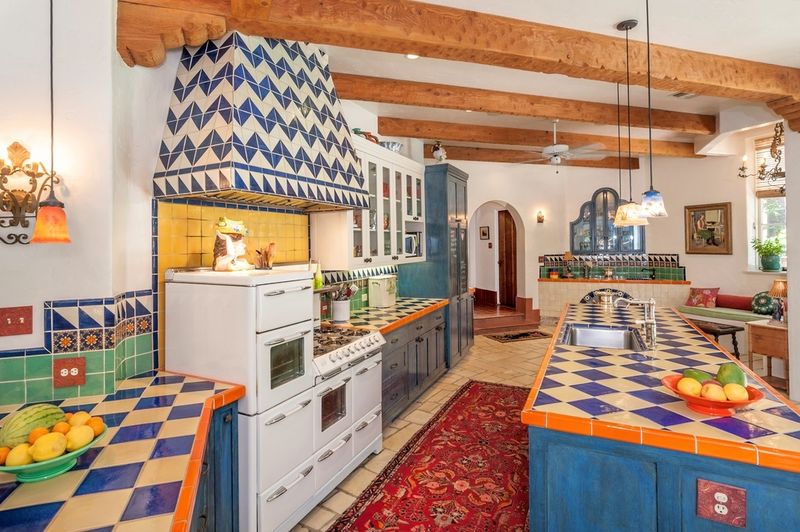
Few design elements capture New Mexico’s lively spirit better than these colorful ceramic tiles. Each hand-painted piece tells a story through bold patterns that blend Spanish, Mexican, and Native American influences.
Unlike mass-produced tiles, Talavera’s slight imperfections and variations make your kitchen truly one-of-a-kind. The vivid blues, yellows, and greens provide perfect contrast against adobe-colored walls, creating a joyful focal point that celebrates the region’s multicultural heritage.
13. Rustic Wooden Cabinetry
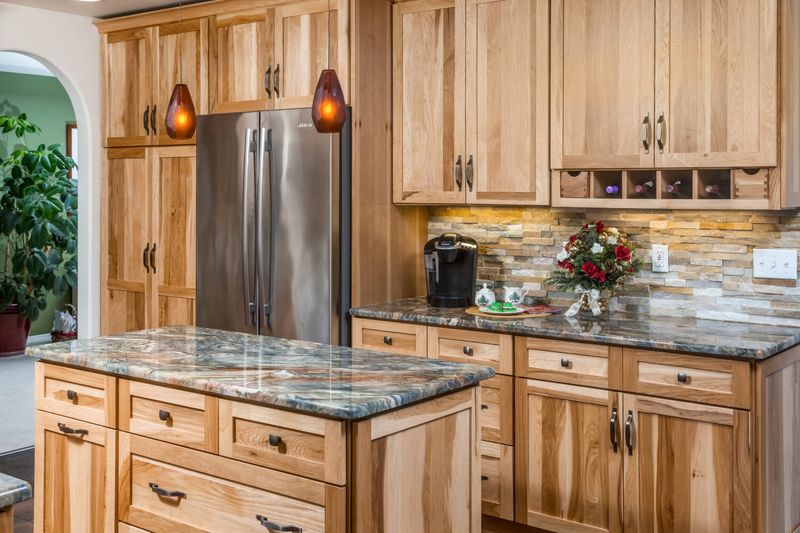
Forget sleek and perfect, authentic New Mexican kitchens embrace wood with character. Knotty pine, alder, or reclaimed timbers with visible grain patterns and natural imperfections create cabinets that feel connected to the landscape.
Many homeowners choose finishes that highlight rather than hide wood’s natural beauty. Hand-carved details, wrought iron hardware, or subtle distressing techniques add to the sense that these cabinets were crafted by local artisans rather than manufactured in a distant factory.
14. Wrought Iron Or Copper Light Fixtures
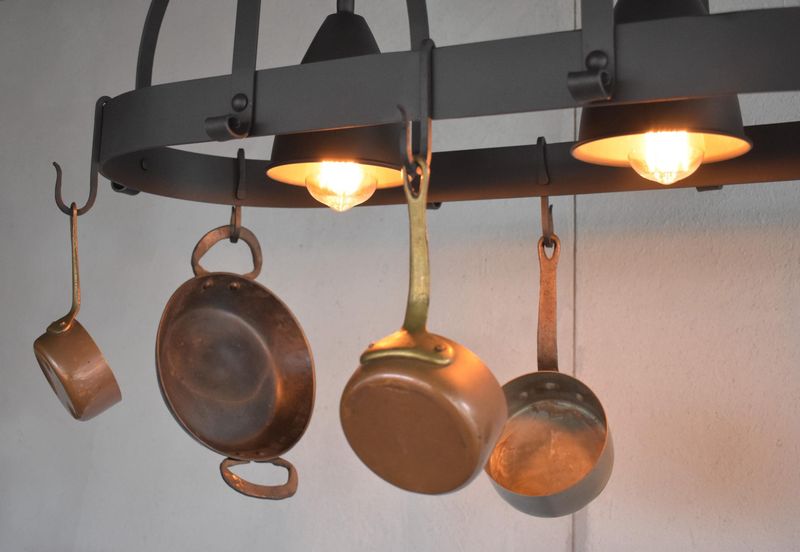
Illuminating your kitchen with hand-forged metal fixtures creates instant Southwestern authenticity. The dark silhouette of wrought iron or the warm glow of hammered copper connects to the region’s rich metalworking traditions.
Unlike mass-produced lighting, these fixtures often feature unique details, perhaps star patterns that reference New Mexico’s incredible night skies or subtle curves inspired by Spanish colonial designs. The soft, warm light they cast complements adobe walls and wooden beams perfectly.
15. Open Shelving With Pottery And Earthenware
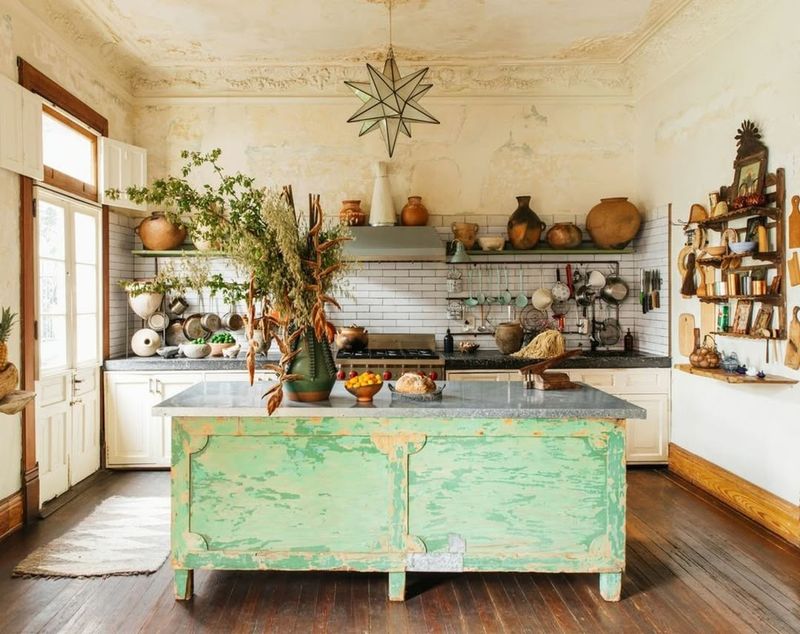
Why hide beautiful collections behind cabinet doors? Open shelving showcases colorful pottery, turning functional storage into a celebration of Southwestern craftsmanship.
Displaying hand-thrown pottery, traditional micaceous cookware, or colorful serving pieces adds instant authenticity. The earthy textures and natural variations create visual interest against adobe walls, while keeping frequently-used items within easy reach.
16. Butcher Block Or Textured Granite Countertops

Run your hands across these surfaces and you’ll feel the difference immediately. Unlike sleek engineered stone, textured natural materials create a tactile experience that connects to New Mexico’s organic aesthetic.
Butcher block brings warmth and can develop a beautiful patina over time. For stone lovers, granite with a leathered or honed finish provides subtle texture while showcasing natural variations. Both options age gracefully, developing character rather than looking worn, perfect for a style that celebrates authenticity.
17. Southwestern Textiles And Patterns
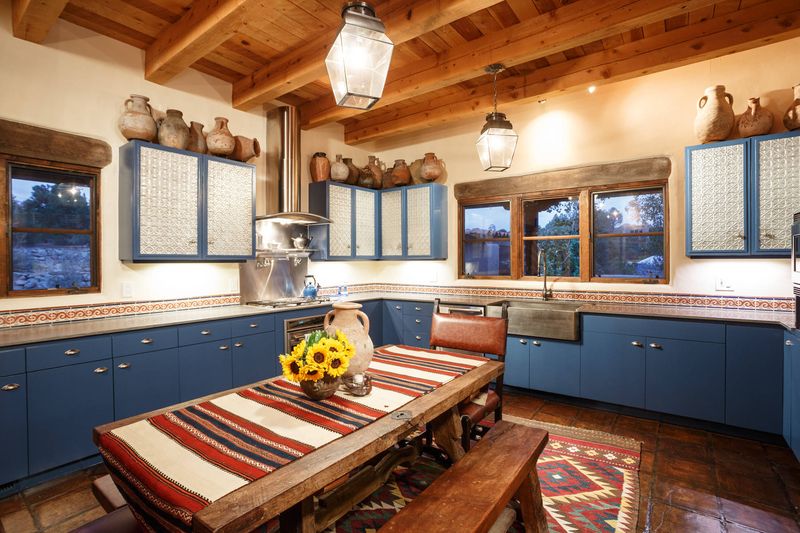
Splash some color into your kitchen with textiles that tell the region’s story. Hand-woven runners, Chimayo-inspired patterns, or Navajo-influenced designs bring authentic Southwestern energy to everyday spaces.
These textiles aren’t just decorative, they’re functional art representing centuries of cultural tradition. Use them for window treatments, chair cushions, or simply drape a handwoven blanket over a bench to add instant warmth and connection to New Mexico’s rich textile heritage.
18. Nichos Or Built-In Wall Alcoves For Decor
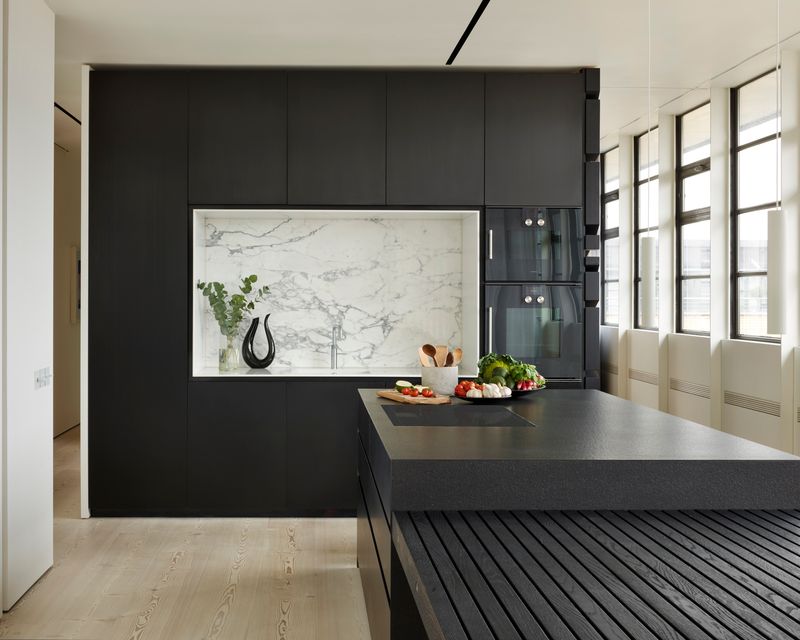
Carved directly into thick walls, these charming recessed shelves create perfect display spaces for treasured objects. Traditionally painted in bright colors that contrast with adobe walls, nichos transform simple architecture into something distinctly Southwestern.
Use these special spaces to showcase santos (carved religious figures), small pottery pieces, or other meaningful items. The arched or rectangular openings add architectural interest while celebrating the region’s Spanish colonial influence. It’s a perfect blend of beauty and cultural connection.

